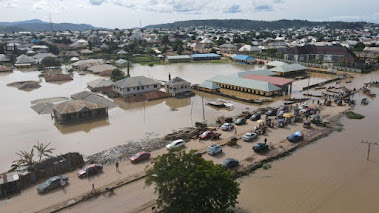Case study: Urbanisation along the Nairobi River
Urbanisation & Nairobi
This blog has so far been focused on physical geography. I have touched on, but not fully broached social issues like urbanisation. UN estimates suggest that 1.5 billion people in Africa will be living in urban areas by 2050 but this isn't always led by a changing climate: education, pay and quality of life are all generally better in urban environments than rural. There is evidence that climate change is becoming a factor. In Kenya, climate change has already caused loss of pasture for livestock and forced some of Kenya's nomadic communities to relocate to urban centres.
Over the last 50 years, Nairobi's population has exploded from almost 50,000 to 5 million people. One of these slums, the Dandora Slum, sits on the banks of the Nairobi River. Only 6% of it's inhabitants have piped water in their housing.
Nairobi & The Nairobi River
Several rivers running through Nairobi but all of these rivers eventually outflow to the Nairobi River. Nairobi itself is named from the Maasai word for "place of cool waters", and was known for its pristine rivers. Throughout the following century, anthropogenic impacts on the water quality due to urbanisation and industrial growth have caused the aquatic system to die completely and cause serious health problems in informal settlements along the river.
Figure 2: Nairobi River running past Pumwani Road, almost an afterthought to its surroundings Source: Hiddenwatersblog.com
Who is to blame?
Rapid expansion of Nairobi has not been matched the developments in infrastructure. The NCC, Nairobi City Council, have allowed industry demands and lack of control over slums affect its policy making and as a consequence, the Nairobi River has become part of the waste disposal infrastructure. in which pollution is entering the river is vast:
- Informal settlements on the banks of the river use it dispose of their raw sewage and rubbish
- Industries within 200ft to drain straight into it
- As it flows past NCC operated sewage plants, it receives partially treated and untreated discharge
- Pit latrines and septic tanks from nearby slums infiltrate the River
To put it lightly, the NCC has lost control of the River. The NCC need to improve their sanitation and waste disposal systems. Local populations have made attempts to clean the River but the responsibility of cleaning the river should not be on the marginalised people living on it. Planning should be put in place by the NCC to establish new centres for climatically displaced peoples away from areas that are already struggling with overpopulation.





Comments
Post a Comment